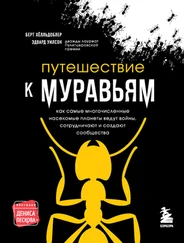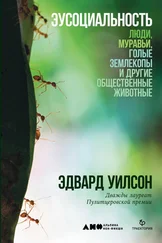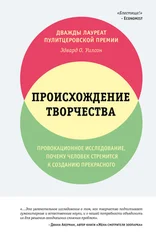Wilson, E. O. 2012. The Social Conquest of Earth (New York: Liveright).
Wilson, M. L., et al. 2014. Lethal aggression in Pan is better explained by adaptive strategies than human impacts. Nature 513 (7518): 414–417.
Wright, C. M., C. T. Holbrook, and J. N. Pruitt. 2014. Animal personality aligns task specialization and task proficiency in a spider society. Proceedings of the National Academy of Sciences, USA 111 (26): 9533–9537.
Глава 7.
ИСТОРИЯ ЧЕЛОВЕКА
Aanen, D. K., and T. Blisseling. 2014. The birth of cooperation. Science 345 (6192): 29–30.
An, J. H., E. Goo, H. Kim, Y.-S. Seo, and I. Hwang. 2014. Bacterial quorum sensing and metabolic slowing in a cooperative population. Proceedings of the National Academy of Sciences, USA 111 (41): 14912–14917.
Antón, S. C., R. Potts, and L. C. Aiello. 2014. Evolution of early Homo : An integrated biological perspective. Science 345 (6192): 45.
Barragan, R. C., and C. S. Dweck. 2014. Rethinking natural altruism: Simple reciprocal interactions trigger children’s benevolence. Proceedings of the National Academy of Sciences, USA 111 (48): 17071–17074.
Bateman, T. S., and A. M. Hess. 2015. Different personal propensities among scientists relate to deeper vs. broader knowledge contributions. Proceedings of the National Academy of Sciences, USA 112 (12): 3653–3658.
Boardman, J. D., B. W. Domingue, and J. M. Fletcher. 2012. How social and genetic factors predict friendship networks. Proceedings of the National Academy of Sciences, USA 109 (43): 17377–17381.
Boehm, C. 2012. Moral Origins: The Evolution of Virtue, Altruism, and Shame (New York: Basic Books).
Botero, C. A., B. Gardner, K. R. Kirby, J. Bulbulia, M. C. Gavin, and R. D. Gray. 2014. The ecology of religious beliefs. Proceedings of the National Academy of Sciences, USA 111 (47): 16784–16789.
Brown, K. S., C. W. Marean, Z. Jacobs, B. J. Schoville, S. Oestmo, E. C. Fisher, J. Bernatchez, P. Karkanas, and T. Matthews. 2012. An early and enduring advanced technology originating 71,000 years ago in South Africa. Nature 491 (7425): 590–593.
Cockburn, A. 1998. Evolution of helping in cooperatively breeding birds. Annual Review of Ecology, Evolution, and Systematics 29: 141–177.
Crockett, M. J., Z. Kurth-Nelson, J. Z. Siegel, P. Dayan, and R. J. Dolan. 2014. Harm to others outweighs harm to self in moral decision making. Proceedings of the National Academy of Sciences, USA 111 (48): 17320–17325.
Di Cesare, G., C. Di Dio, M. Marchi, and G. Rizzolatti. 2015. Expressing our internal states and understanding those of others. Proceedings of the National Academy of Sciences, USA 112 (33): 10331–10335.
Dunbar, R. I. M. 2014. How conversations around campfires came to be. Proceedings of the National Academy of Sciences, USA 111 (39): 14013–14014.
Flannery, K. V., and J. Marcus. 2012. The Creation of Inequality: How Our Prehistoric Ancestors Set the Stage for Monarchy, Slavery, and Empire (Cambridge, MA: Harvard University Press).
Foer, J. 2015. It’s time for a conversation (dolphin intelligence). National Geographic 227 (5): 30–55.
Gallo, E., and C. Yan. 2015. The effects of reputational and social knowledge on cooperation. Proceedings of the National Academy of Sciences, USA 112 (12): 3647–3652.
Gintis, H. 2016. Individuality and Entanglement: The Moral and Material Bases of Social Life (Princeton, NJ: Princeton University Press).
Gómez, J. M., M. Verdu, A. González-Megías, and M. Méndez. 2016. The phylogenetic roots of human lethal violence. Nature 538 (7624): 233–237.
González-Forero, M., and S. Gavrileta. 2013. Evolution of manipulated behavior. American Naturalist 182 (4): 439–451.
Gottschall, J., and D. S. Wilson, eds. 2005. The Literary Animal: Evolution and the Nature of Narrative (Evanston, IL: Northwestern University Press).
Halevy, N., and E. Halali. 2015. Selfish third parties act as peacemakers by transforming conflicts and promoting cooperation. Proceedings of the National Academy of Sciences, USA 112 (22): 6937–6942.
Heinrich, B. 2001. Racing the Antelope: What Animals Can Teach Us About Running and Life (New York: Cliff Street).
Hilbe, C., B. Wu, A. Traulsen, and M. A. Nowak. 2014. Cooperation and control in multiplayer social dilemmas. Proceedings of the National Academy of Sciences, USA 111 (46): 16425–16430.
Hoffman, M., E. Yoeli, and M. A. Nowak. 2015. Cooperate without looking: Why we care what people think and not just what they do. Proceedings of the National Academy of Sciences, USA 112 (6): 1727–1732.
Keiser, C. N., and J. N. Pruitt. 2014. Personality composition is more important than group size in determining collective foraging behaviour in the wild. Proceedings of the Royal Society B 281 (1796): 1424–1430.
Leadbeater, E., J. M. Carruthers, J. P. Green, N. S. Rosen, J. Field. 2011. Nest inheritance is the missing source of direct fitness in a primitively eusocial insect. Science 333 (6044): 874–876.
LeBlanc, S. A., and K. E. Register. 2003. Constant Battles: The Myth of the Peaceful, Noble Savage (New York: St. Martin’s Press).
Liu, J., R. Martinez-Corral, A. Prindle, D.-Y. D. Lee, J. Larkin, M. Gabalda-Sagarra, J. Garcia-Ojalvo, and G. M. Süel. 2017. Coupling between distant biofilms and emergence of nutrient time-sharing. Science 356 (6338): 638–642.
Macfarlan, S. J., R. S. Walker, M. V. Flinn, and N. A. Chagnon. 2014. Lethal coalitionary aggression and long-term alliance formation among Yanomamö men. Proceedings of the National Academy of Sciences, USA 111 (47): 16662–16669.
Martinez, A. E., and J. P. Gomez. 2013. Are mixed-species bird flocks stable through two decades? American Naturalist 181 (3): E53 – E59.
Mesterton-Gibbons, M., and S. M. Heap. 2014. Variation between self– and mutual assessment in animal contests. American Naturalist 183 (2): 199–213.
Miller, M. B., and B. L. Bassler. 2001. Quorum sensing in bacteria. Annual Review of Microbiology 55: 165–199.
Muchnik, L., S. Aral, and S. J. Taylor. 2013. Social influence bias: A randomized experiment. Science 341 (6146): 647–651.
Opie, C., et al. 2014. Phylogenetic reconstruction of Bantu kinship challenges main sequence theory of human social evolution. Proceedings of the National Academy of Sciences, USA 111 (49): 17414–17419.
Rand, D. G., M. A. Nowak, J. H. Fowler, and N. A. Christakis. 2014. Static network structure can stabilize human cooperation. Proceedings of the National Academy of Sciences, USA 111 (48): 17093–17098.
Roes, F. L. 2014. Permanent group membership. Biological Theory 9 (3): 318–324.
Suderman, R., J. A. Bachman, A. Smith, P. K. Sorger, and E. J. Deeds. 2017. Fundamental trade-offs between information flow in single cells and cellular populations. Proceedings of the National Academy of Sciences, USA 114 (22): 5755–5760.
Thomas, E. M. 2006. The Old Way: A Story of the First People (New York: Farrar, Straus and Giroux).
Tomasello, M. 1999. The Cultural Origins of Human Cognition (Cambridge, MA: Harvard University Press).
Wiessner, P. W. 2014. Embers of society: Firelight talk among the Ju/’hoansi Bushmen. Proceedings of the National Academy of Sciences, USA 111 (39): 14027–14035.
Wilson, E. O. 1975. Sociobiology: The New Synthesis (Cambridge, MA: Belknap Press of Harvard University Press), p. 39.
Читать дальше
![Эдвард Уилсон Эусоциальность [Люди, муравьи, голые землекопы и другие общественные животные] [litres] обложка книги](/books/407117/edvard-uilson-eusocialnost-lyudi-muravi-golye-cover.webp)
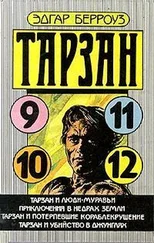

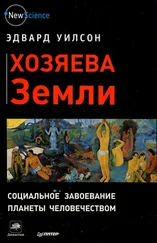
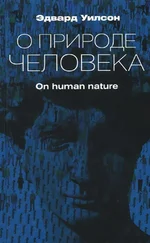



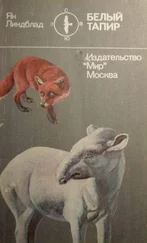
![Карина Демина - Моя свекровь и другие животные [litres с оптимизированной обложкой]](/books/428897/karina-demina-moya-svekrov-i-drugie-zhivotnye-litr-thumb.webp)
